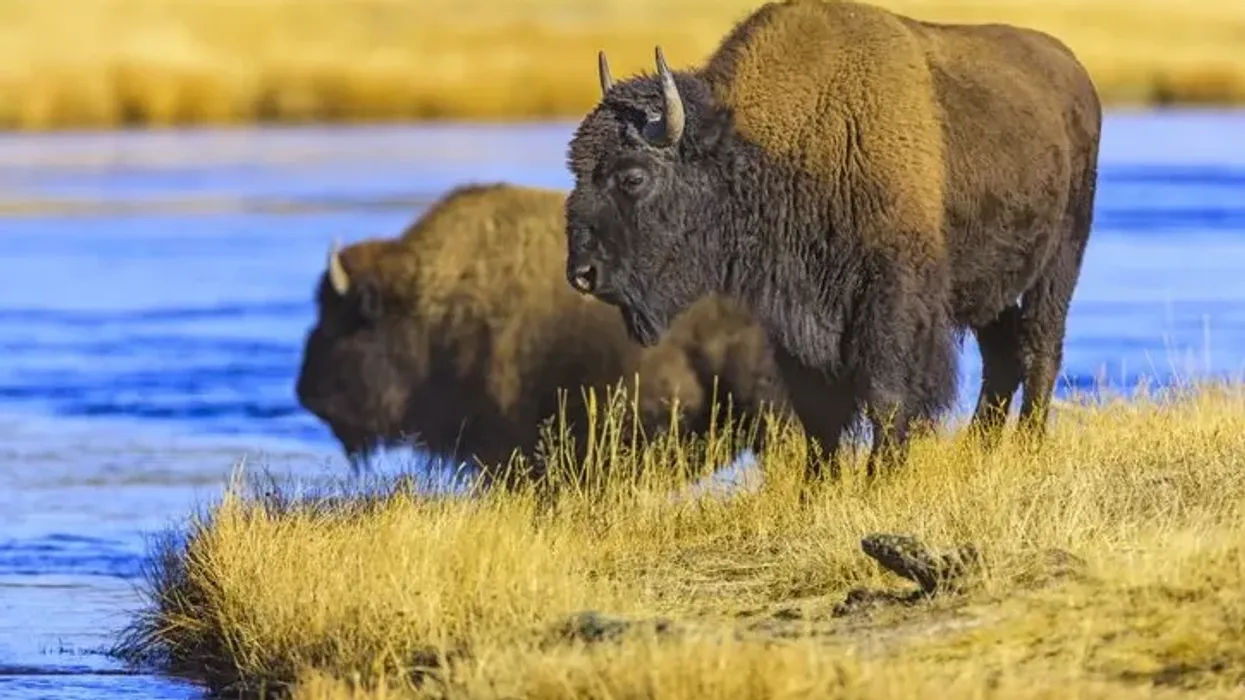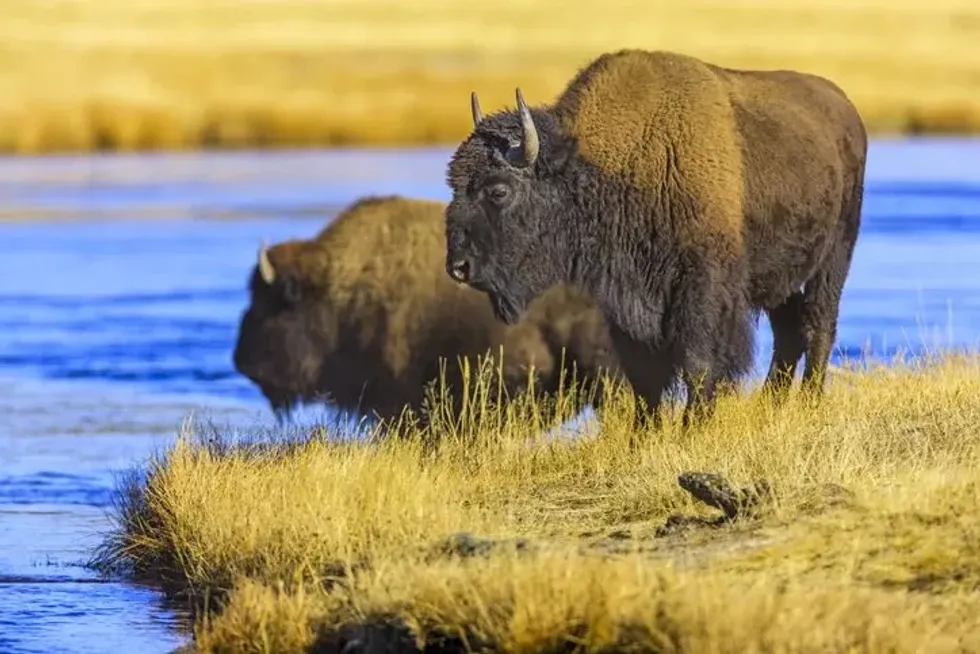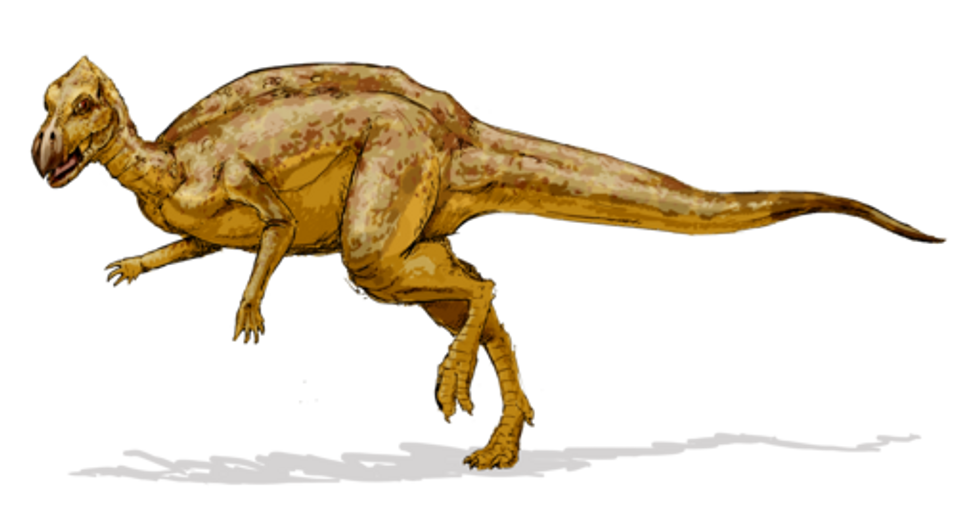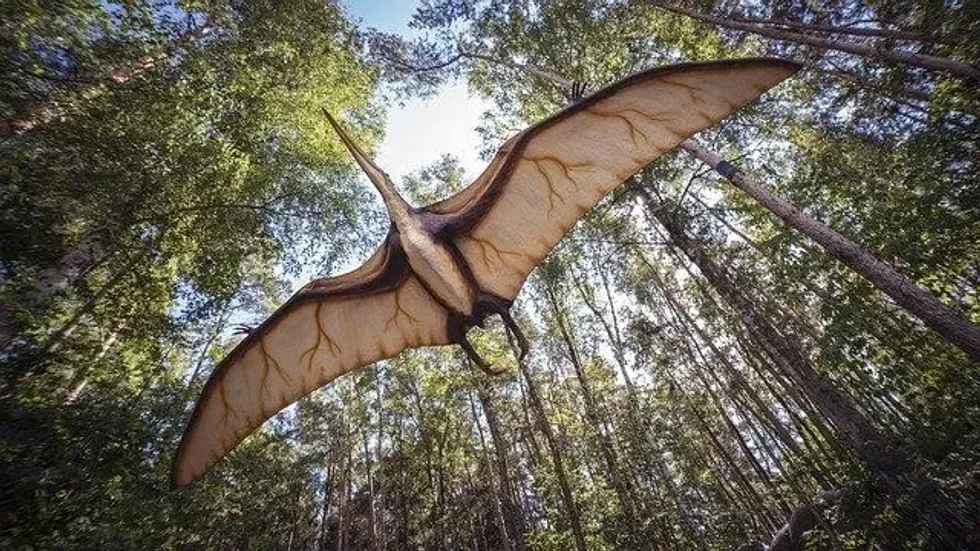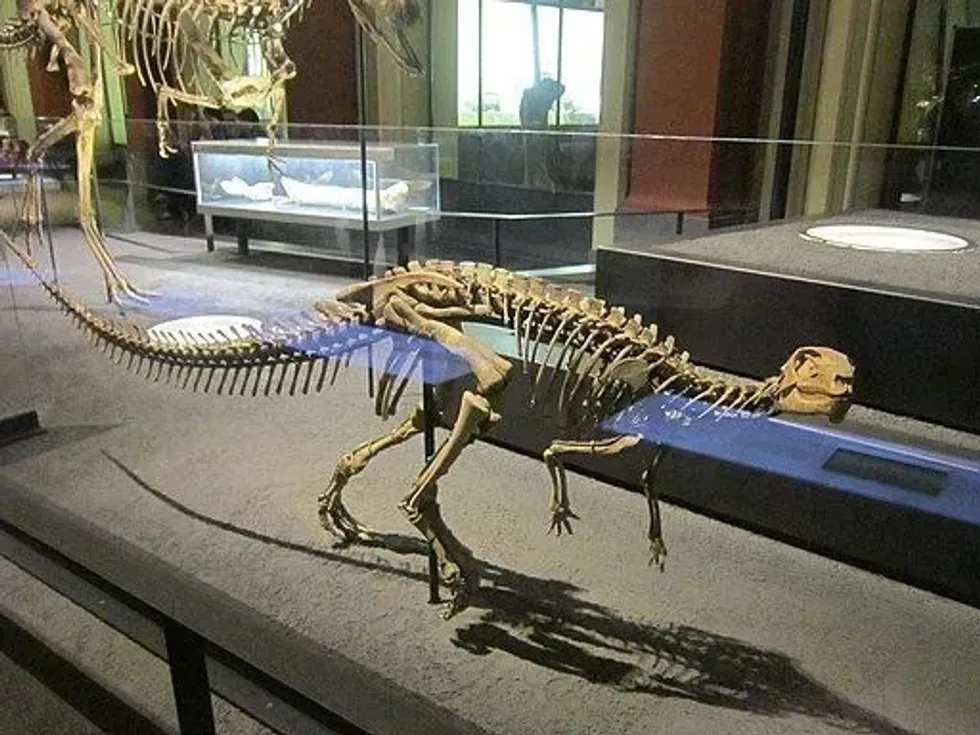Due to a few similar aspects, Bison are often mistakenly called buffaloes not only in America but also in many other countries. The American bison is considered as one of the most symbolic animals of the Great Plains in America.
When the bison herds were deteriorating in size, there was a tiny herd that was conserved at the Wind Cave National Park in South Dakota.
Wind Cave is the place that helped re-establish the bison herds all over the world over the span of 100 long years. They had a huge role in raising the current number of bison around five million across the world.
Although history prominently talks about the bison subspecies namely American and the European bison, here is a fun fact: the American bison has two distinct subspecies that go by the names Plains bison and the Wood bison.
If you want to know more about different animals do check out buffalo and Kodiak bear after reading these bison facts.
Bison Interesting Facts
What type of animal is a bison?
A bison, according to the Native American standards, is commonly known as buffalo or the plains buffalo type of animal.
What class of animal does a bison belong to?
The bison has two subspecies called the American bison and European bison. Both of these constitute an ox-like grazing Mammalia class of the Bovidae family.
How many bison are there in the world?
Currently, the bison population stands at approximately 530,000 which includes private and public grounds across the world.
Where does a bison live?
The American bison habitat can be found in the areas of North America, Canada, South Dakota, and Mexico. The European ones can be found in the regions of Belarus, Lithuania, Poland, Russia, Slovakia, and Ukraine. The Indian species of plains bison named gaur has also been found in areas of the Western Ghats.
What is a bison's habitat?
American bison populations are known to live in open or semi-open prairies, grasslands, and shrubs when on public lands. The European bison is usually found in lightly wooded or fully wooded areas.
American bison and European bison have the capability of being found at an altitude of around 8000 ft (2,400 m) above even though they do not favor steep slopes.
Who do bison live with?
The bison species are known to be social creatures with a herd mentality that live together in groups. Their groups are called herds which include females and calves or the cattle.
Male bison are known to live near a herd of females and bison calves. They usually don't mind belonging to a bison herd that includes other male bison along with females and babies, especially in the Native American tribal lands.
How long does a bison live?
Based on the history and research of bison and their wildlife herds, their life span has ranged from 10-20 years of healthy life unless caught for other commercial purposes. The bison can even live for around 40 years when held in captivity.
How do they reproduce?
The bison mating season is mainly during the months of July to August. The process is also known as the 'rut' and the breeding season would be known as rutting season.
During the mating season, the cow i.e. the female bison, and the males, known as bulls, mate in order to give birth to a baby bison.
The females go through a nine-month long gestation period just as human females. They give birth to bison calves who are taken care of by the whole bison herd along with the mothers.
What is their conservation status?
In prehistoric times, a wide range of bison roamed in North America but were near threatened. This proved true around the late 19th century when America's wildlife had just around 100 bison remaining and their conservation had reached near extinction.
The bison population is now stable and over a period of time, the International Union for Conservation of Nature marked their conservation status as Near Threatened for the European bison and the American bison, whereas the gaur or Indian bison is Vulnerable.
Bison Fun Facts
What do bison look like?
Many people have confused bison with buffalo since prehistoric times. That is how the buffalo vs bison searches have reached their peak.
The European and American bison have a larger hump and thick hair covering their body than a buffalo. They have a skin full of hair and the colors of these animals range from red-brown, black, dark brown, to white. The white bison are usually the result of cross-breeding of the cattle.
Due to their large head and parted eyes, the bison are near-sighted animals. There has been a history of the native bison skull being used as fertilizer for lands amongst other animals.
How cute are they?
Although the fully grown bison is seen as one of the most dangerous-looking animals, the calves in national parks or on American and European lands are considered to be the cutest looking calves.
How do they communicate?
Even though they have weak eyesight, bison have strong ears and noses. Their hearing and smelling powers help them communicate with each other.
Along with that, the position of their tail is something that communicates their moods too. For instance, if the tail sticks straight up, the animal is considered to be angry. They might even grunt, growl, and snort in such cases.
How big is a bison?
The American bison is known as the largest mammal of North America. Any bison, irrespective of the regional trait, can grow as big as 6.8-12.4 ft (2.1-3.8 m). The national wildlife might have bison with a height of 4-6.5 ft (1.2-1.9 m).
How fast can a bison run?
Bisons species are known to be huge mammals, popular since the late 1800s. Even though they might appear bulky and lazy or lethargic, they sure are great runners. The bison can run around 35-40 mph (56.3-64.3 kph).
The bison can also jump just as fast as they can run. Bison are capable of jumping across hurdles that might be as high as 6 ft (1.8 m) in distance. This helps them with their agility in facing any kind of predator and winning the fight easily in addition to its size and weight.
How much does a bison weigh?
Be it plains or wood bison, both the regional American as well as the European bison can weigh up to 2,000 lb (907 kg). The bison with the largest weight recorded in the wild was 2,800 lb (1,270 kg) and the largest bison had a weight of 3,801 lb (1,724 kg) and was raised in captivity.
What are their male and female names of the species?
The word bison is considered as a singular and plural term and they do have different gender-based names. The female bison is called a cow and the males is known as a bulls.
What would you call a baby bison?
A bison baby is called a calf. Although due to their orangish-red color they are also called 'red dogs'. This nickname has been quite popular since the history of bison as animals.
What do they eat?
All the bison population are herbivores. Hence, the bison diet usually includes grass and herbs from the public lands. They may also have a few leaves, twigs, acorns, and berries on the plains. Bison herds are also known for foraging around in North America or other conservation areas that they are found in.
Are they dangerous?
The bison herd is known a curious and aggressive kind of animal. When in contact with humans, they might get curious and, if approached, they have been recorded to attack. Hence, they are considered dangerous and humans are advised to keep a safe distance.
Would they make a good pet?
No. Bison are free-ranging animals and even after a lot of domestication, they are not at all friendly and usually possess acute stress response.
Did you know...
Out of the different spaces in America, the Yellowstone is the only place that has the pure lineage of bison as that place has never been exhausted of the bison herds since historical times.
There were millions of bison population that resided in North America. Unfortunately, from the 19th century, the number had gone down to just 350+ bison. With better planning and breeding today, even though the herds had once deteriorated in size, there are as many as 500,000 bison in the US.
If you're wondering whether bison are stronger than bulls, the answer would be yes, bison are surely stronger than bulls. The normal bull, even though equal in weight to a bison, is domesticated in nature.
The wild bison is muscular and as a matter of fact, is better in strength than any of the cattle as it can even beat and kill a tiger when in combat.
What is the difference between a bison and a buffalo?
Although these two species are majorly confused, the bison vs buffalo is a fact file that consists of a few differences. For instance, bison are of the Bison genus, while buffaloes belong to the Bubalus genus.
Buffaloes have curvy horns and are usually short whereas bison have short and sharp horns and are usually taller than the buffaloes. The bison are known to be bigger than the buffaloes with a huge hump and bulkier head.
How to cook bison?
Bison meat is loved by many individuals. The Bison steak is best when it is cooked medium to rare as it helps retain the moisture in the meat and makes it flavorful for those who relish the delicacies.
Cooking a ground bison wouldn't take more than two and a half minutes on both sides if the servings need to be cooked rare. Bison recipes are usually made by grilling, roasting, and then sauteing.
The meat is also converted into patties for burgers that might look dark pink even after being cooked due to the consistency and texture. This is lean meat and has less calories than beef, another reason why it is loved by many.
Here at Kidadl, we have carefully created lots of interesting family-friendly animal facts for everyone to discover! Learn more about some other mammals including Highland cattle, or takin.
You can even occupy yourself at home by drawing one on our bison coloring pages.

